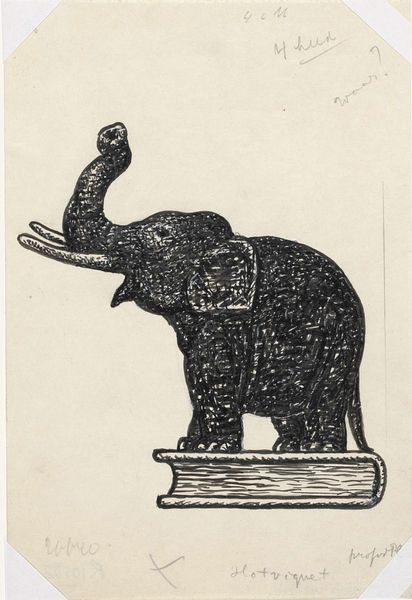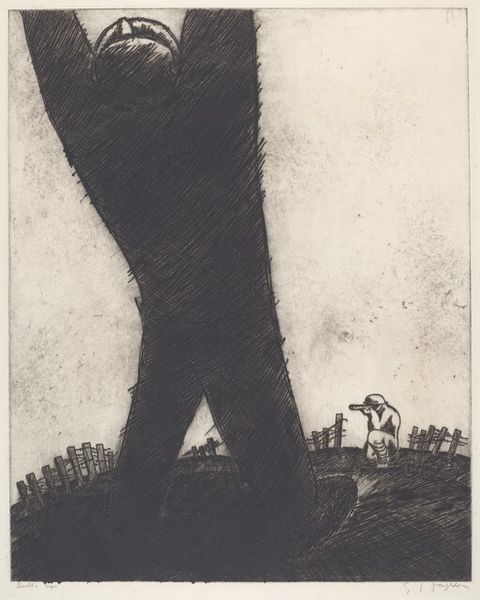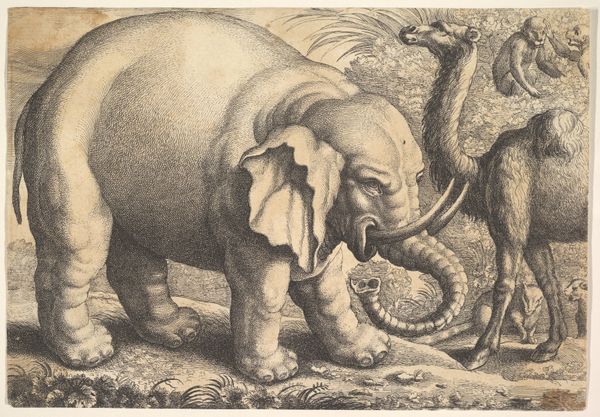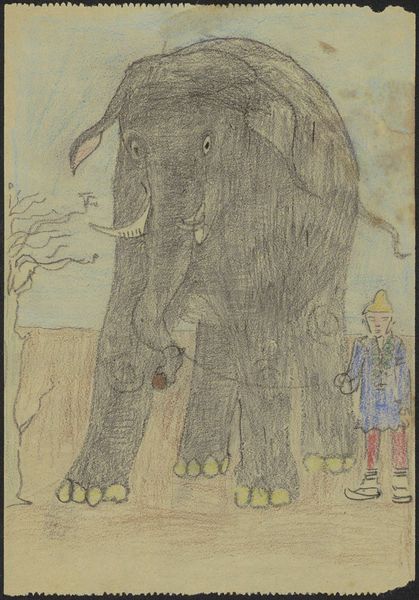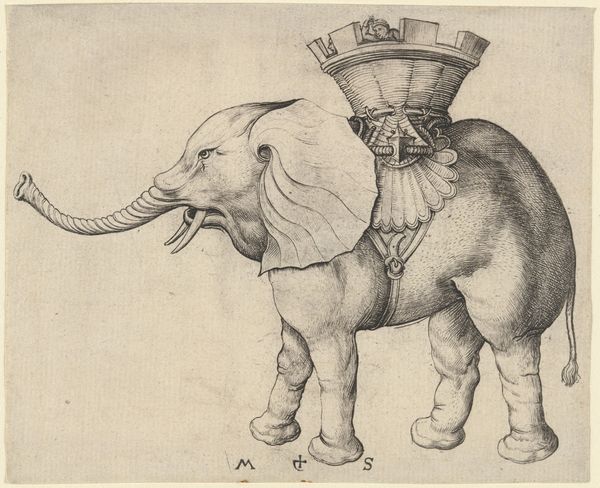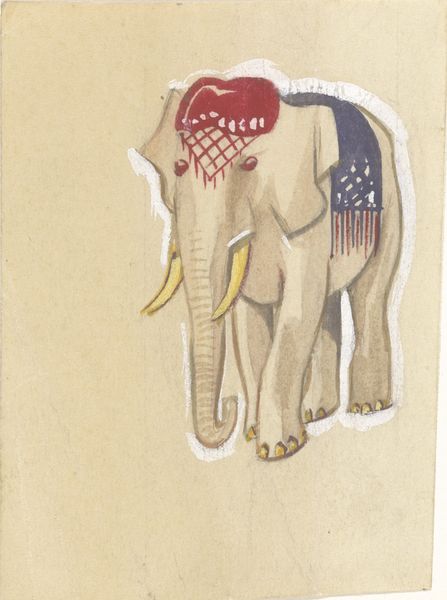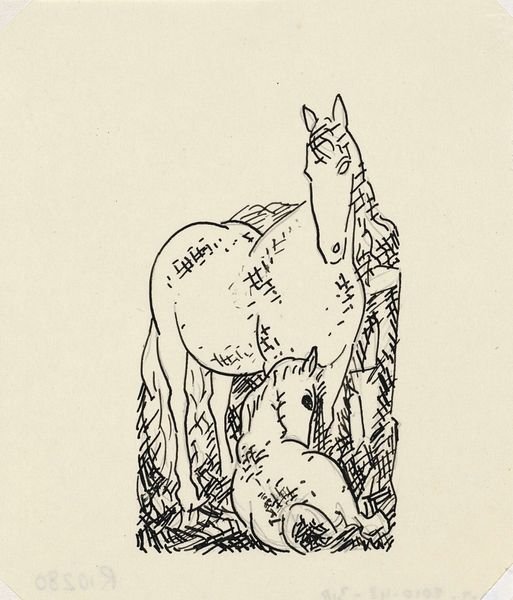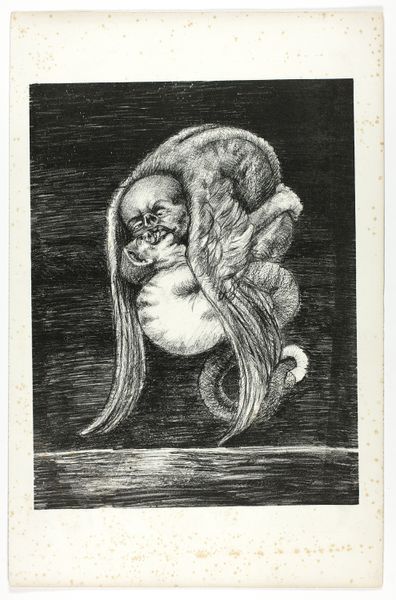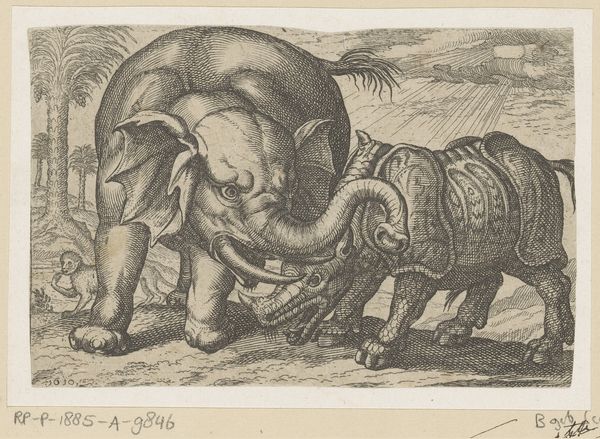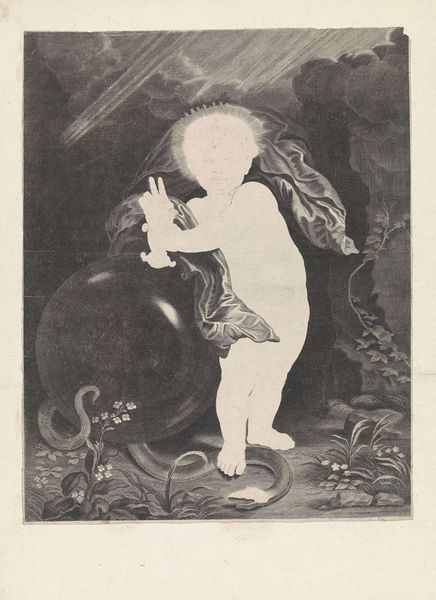
Olifant balancerend op een bal met een man op zijn rug 1856 - 1897
0:00
0:00
drawing, pencil
#
drawing
#
impressionism
#
caricature
#
pencil sketch
#
caricature
#
figuration
#
pencil
Dimensions: height 286 mm, width 148 mm
Copyright: Rijks Museum: Open Domain
Curator: Henri-Charles Guérard created this piece, titled "Olifant balancerend op een bal met een man op zijn rug", sometime between 1856 and 1897. It's currently held in the Rijksmuseum, and was executed in pencil. What's your initial take on this caricature? Editor: My first impression is the precarious balance. The textural variations create a rather unsettling feeling, as though everything is about to topple over. It's intriguing and, dare I say, a bit unsettling. Curator: The figure riding the elephant appears clown-like, perhaps symbolizing the absurdity of power or the performance inherent in social hierarchies. We can analyze this work through the lens of, say, the relationship between the powerful (the elephant) and the individual, particularly during a period of social and political change. Editor: I'm more drawn to the structural dynamics. The elephant balanced on a star-studded ball; it's all shapes, weight, and the delicate pencil strokes. How do those formal choices impact the viewing experience? The spherical shape supporting so much weight... Curator: Precisely! What power structures are at play when this vulnerable figure controls something so magnificent and the tension inherent in that position. How does this all connect to gender? How might our viewing shift if we considered the artist and subject in relation to 19th-century power structures? Editor: I understand where you're coming from, and to see the interplay between form and power dynamics is interesting, I still find myself caught by the drawing style itself. Note the variations in pressure of Guérard's pencil line. What impact does the use of monochrome tones contribute to our reading? The elephant and its human burden have this sort of imposing stature because of its tonal treatment. Curator: The social and political context of the time—imperialism, class division and the like—were all rendered in the monochrome of the news as well as caricatures in publications. These themes may play out within this seemingly innocent scene. It urges us to consider the intersections of class, representation, and control, doesn't it? Editor: I see. I hadn’t considered its context in the political print, but I have to agree it is impactful here. Curator: This piece really underscores how the interplay of social commentary and formal rendering enriches our understanding, and perhaps offers insights into that 19th-century circus. Editor: A fresh reading through a new perspective... yes.
Comments
No comments
Be the first to comment and join the conversation on the ultimate creative platform.
